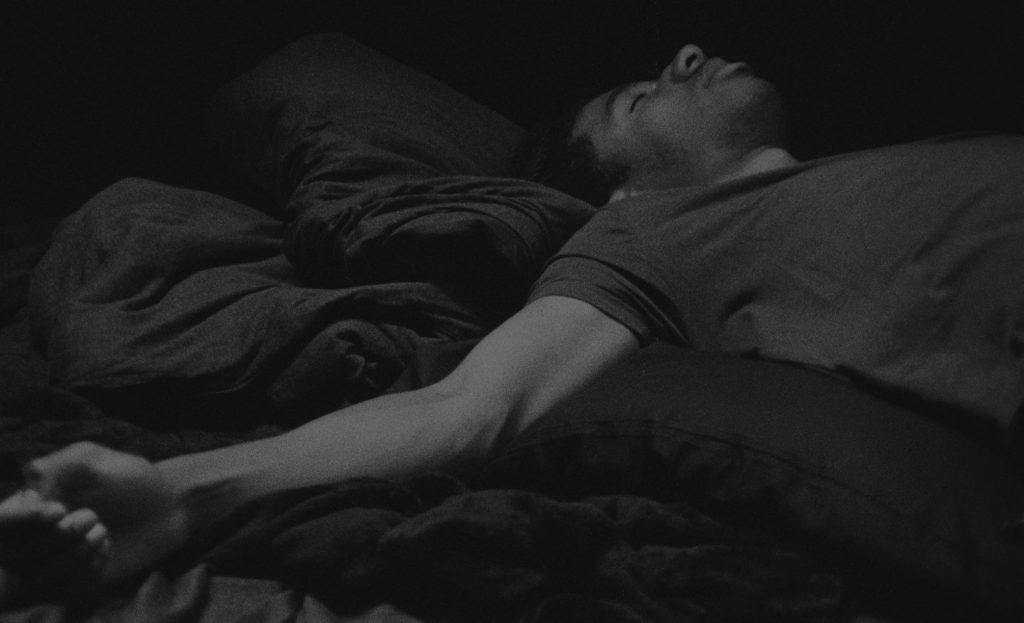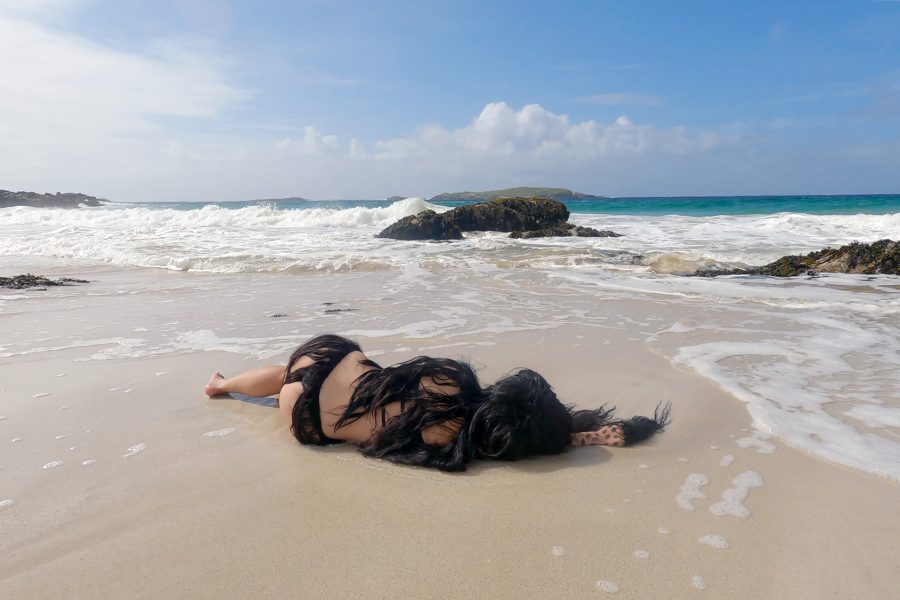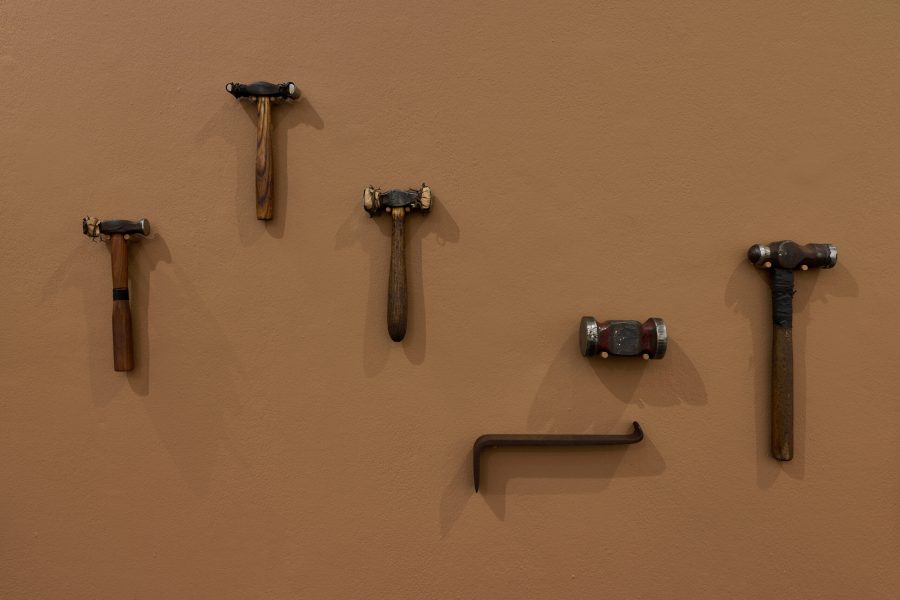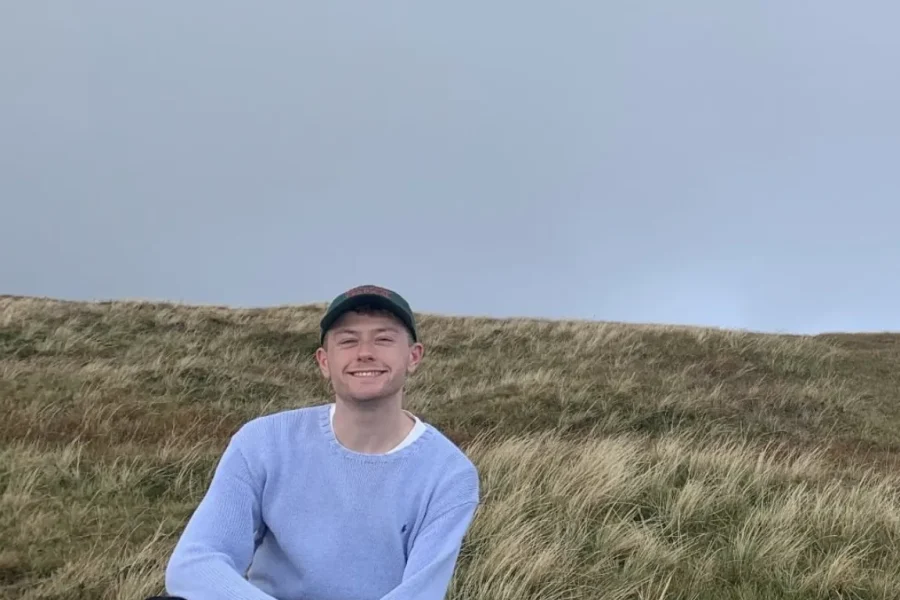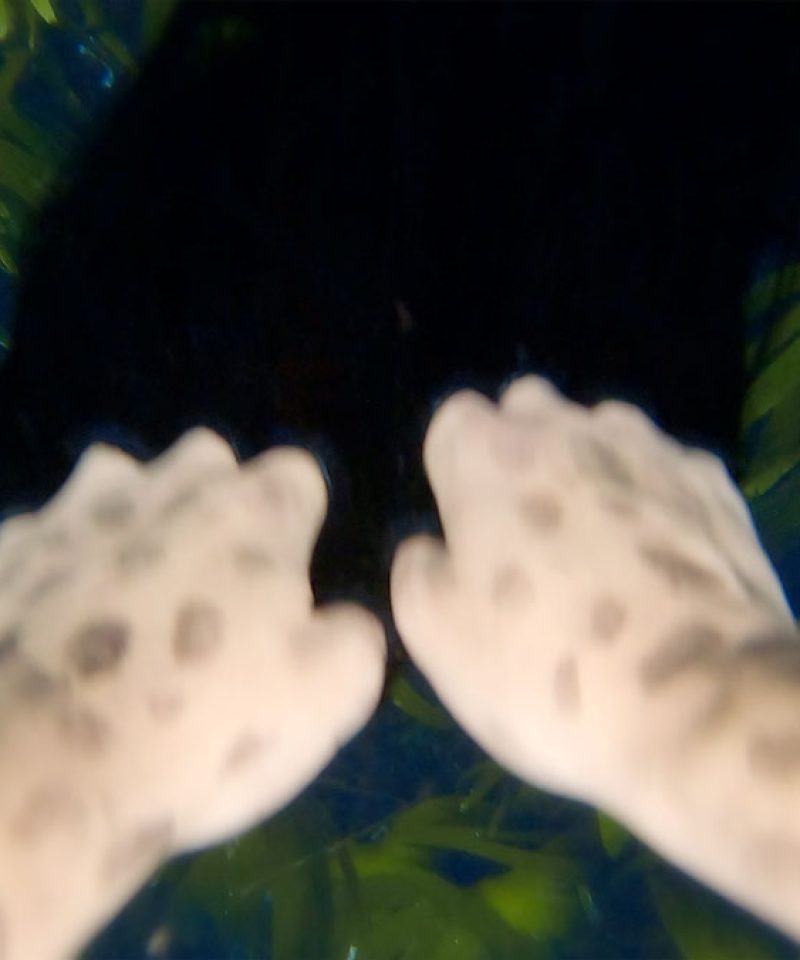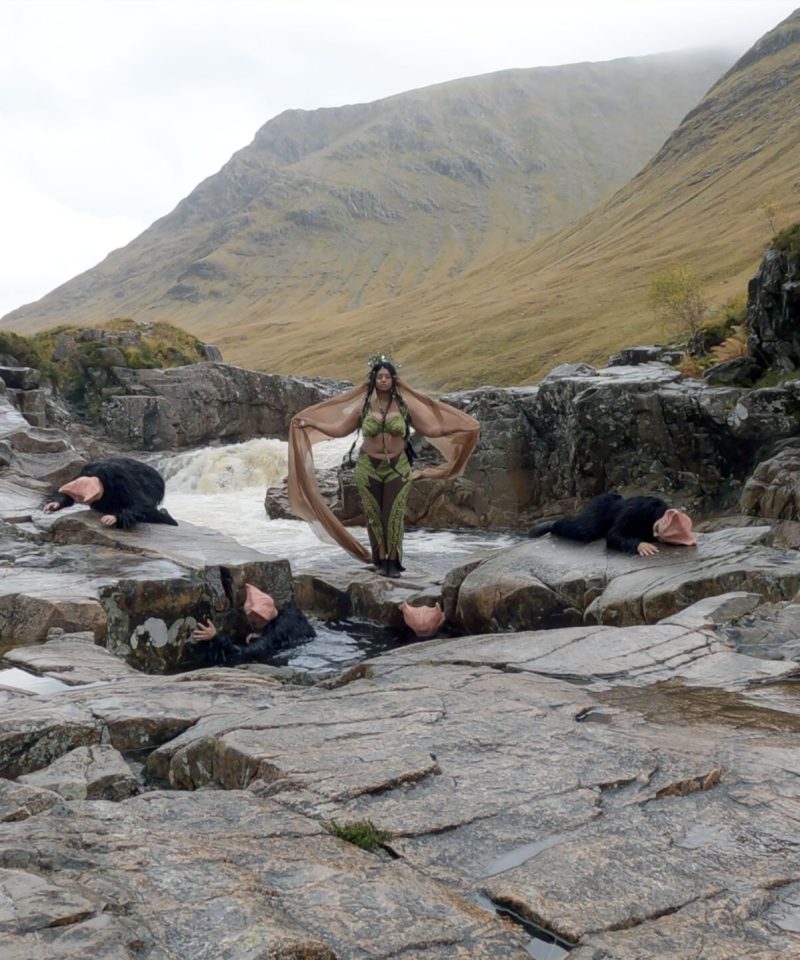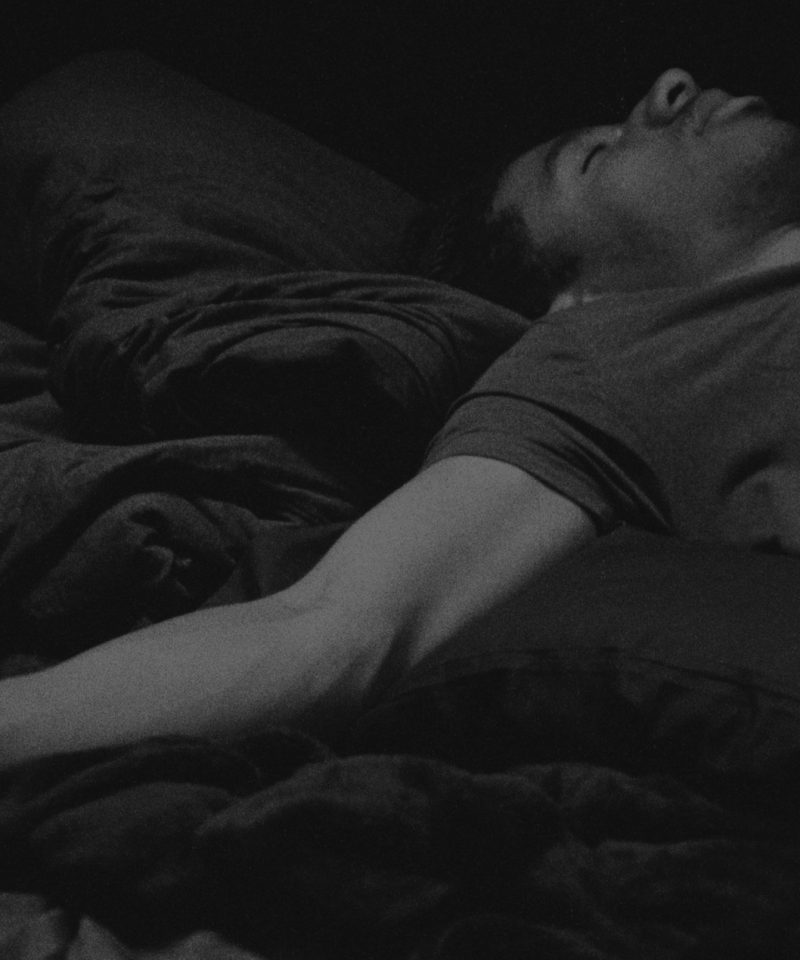Listen to the full text read by Dylan Huw using the link above or read it below on this page. A downloadable PDF version of this text is also available at the bottom of this page.
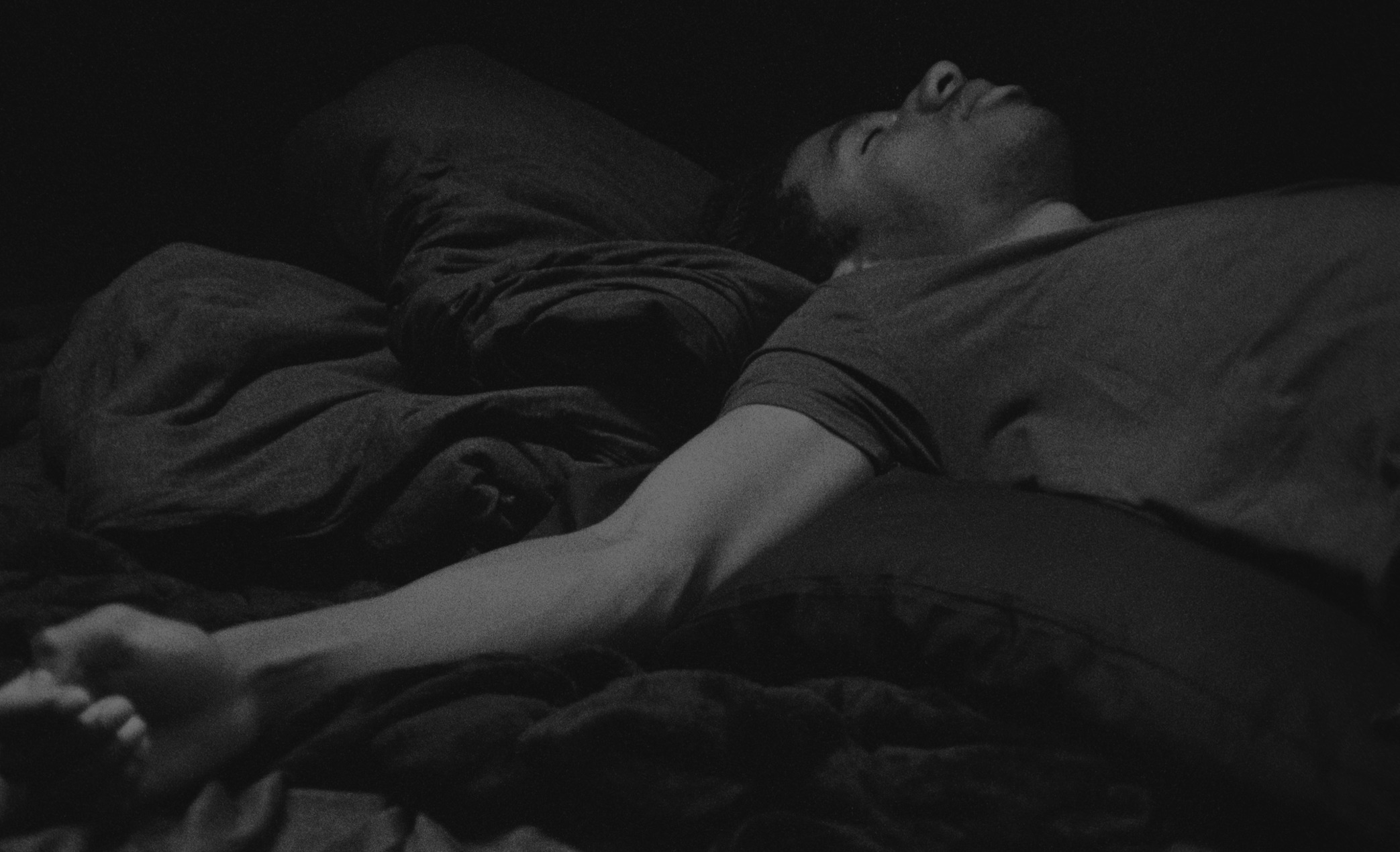
Dylan Huw is Jerwood Writer in Residence from January – June 2022. This is his response to cleave to the BLACK by Michael., commissioned for Jerwood/FVU Awards 2022 on display at Jerwood Space until 23 July 2022.
This text, Araf, bach, has been composed solely during viewings and re-viewings of Michael.’s film, cleave to the BLACK, first at Jerwood Space on Thursday 5th May and subsequently on my laptop screen on Monday 9th and Wednesday 11th May. Writing it in this way is an attempt to resist too much contemplation of the film while I am not inside of its world, seeing instead where its slowness takes me while I am enveloped in its images and sounds.
Araf, bach consists of thirty-five sentences, one for each minute of cleave to the BLACK’s runtime. This being a film which invites such wide-angle reconfigurations of the passing of time, both as a material and as a strange invention which nonetheless conditions all our movements and relations.
With this conceit, I’m likely under the influence of recent re-reads of Anne Boyer, whose essay ‘My Life’ is a rumination on Mary J. Blige’s My Life, Lyn Hejinian’s My Life, Mary J. Blige’s My Life 2, Lyn Hejinian’s My Life in the 90s, and Anne Boyer’s life, and is composed of three paragraphs whose numbers of sentences correspond to their subjects’ (Blige’s, Hejinian’s and Boyer’s) ages at the time they created their respective My Lifes.
(“These My Lifes aren’t lives,” she writes, “they are made things.”)
There is no escaping time, as much as we would like to, and as much as we try. While it would probably be ill-advised to linger on this thought too long, lest it drive you fully insane, it is also maybe comforting to imagine that such a ludicrous human invention could hold so much influence. That some somewhere someone’s daydream today might hold keys to new ways of understanding that we could one day be unable to imagine a world without.
In another text of the same volume, ‘How to Go From [Poetry to Art]’, Boyer asks: “Who imagined that what was important about a word is that it stood for something else?”
Stop reading for a moment and consider what the following words stand for, to you: cleave; Black; slowness; triptych; sleep; ritual; hypnosis; procession; death.
(All words I wrote in my little black notebook during that initial viewing of Michael.’s film.)
cleave to the BLACK is distinguished by, among many other things, the total absence of language within it. What takes language’s place are the associations conjured by the unfurling of its images and sounds, which are thick with a slow, lingering intensity. My mind wanders: to Tsai Ming-Liang’s Walker cycle of films, installations and performances depicting a lone Buddhist monk traversing different environments at a pace distinct from that of his contemporary. To Warhol’s Blow Job, an unlikely but uncanny precursor to cleave to the BLACK’s right-hand screen depicting a Black boy lying in an ambiguously restless repose. To imagining other elsewheres and otherwises that Michael.’s triad of screens directly and indirectly prompts us towards.
To Tina Campt, too, who in a talk I watched recently borrows from André Lepecki to differentiate between a slowness of kinetics and one of intensities. (Some of these notes are from that talk, and from a different black notebook, for which I reach during viewing number two.)
To the way she speaks of slowness as a mode of amplification.
About slowness as an opening, to linger in the small, in details, in reflection.
Michael., I think, echoes Campt’s call to understand slowness as an alternative form of ethics.
Kayo Chingonyi, in an incisive text commissioned alongside the film, writes: “When I see a black male figure lying down I wonder at the circumstances.” Though the movements of its images are patient and luxurious, the film’s core is their procession-like intensity, which is neither.
It is difficult to escape that this intensity feels charged with an undercurrent of bubbling rage. Uniting the film’s three screens is a play with the interrelations of threat, fear and grief, in dialogue with the violent legacies of how Black men have been imaged, and their images appropriated.
In Welsh we have a phrase, ‘araf bach’, which literally means ‘little slow’ or ‘slowly small.’ I’ve never previously thought of this as an untranslatable phrase, but like most untranslatable phrases, whose workings are freed from the inheritances of dominant language cultures, it points to alternative ways of understanding the thing it describes. Simultaneously embracing an ethics of slowness, and allowing yourself to be small among the dwarfing scales of permanent catastrophe which define life on this planet, feel increasingly imperative to surviving the unlivable conditions of the contemporary. cleave to the BLACK speaks to the lopsided nature of those conditions, and is sensitive to the unforgiving terrains that specifically Black boys and men are tasked with navigating every day.
What would it feel like to live in a land that loves you back, asks Michael. in an interview which sits alongside the commissioned work. The film meditatively grasps at that unimaginable state. It does so not by making any grandiose claims but by making considered space for images and associations of rest, of deep breaths and contemplation prolonged.
Space to softly imagine a world beyond the need to constantly move at the “tempo of emergency”.
Space for possibility, possibly, and for rejuvenation.
Other texts by Dylan Huw:
